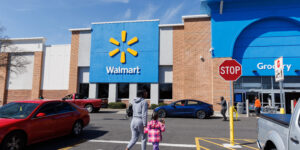Success for a specialty lines carrier is about discipline. It’s about walking away from classes of business or lines of business when rates are no longer adequate. It’s about having the courage to make substantial changes.
That’s according to Lou Levinson, the newly appointed CEO of Lexington Insurance, the excess and surplus lines unit of American International Group Inc.
For Lexington, success has been built around strong relationships with wholesale partners by delivering the right products and services for insureds.
“But it’s also about having the underwriting courage and discipline to walk away when we think we either can’t fix something through rate, terms or price,” Levinson said. That means walking away from premium when “we don’t think we can make a fair profit,” he said. “I think that’s the key to success.”

During AIG’s Q2 2019 earnings call on Aug. 8, President and CEO Brian Duperreault said that the evolving, hardening market is sustainable, especially considering the insurer’s ongoing efforts to shed excessively risky business. Peter Zaffino, AIG’s CEO, General Insurance, cited Lexington Insurance, which he said has undergone “extensive repositioning with revised risk appetite and distribution strategy that has resulted in vastly improved submission flow and tighter limits.” The result has meant strong rate improvement in the mid-to-high teens in property/casualty.
But watching premiums rise and fall based on rate adequacy in different lines, and then shedding those lines of business that are not producing desired profitability, takes courage, Levinson told Insurance Journal, Carrier Management’ssister publication. “Not every company has that same level of courage,” he added.
“The strategic reshaping in recent years of AIG, long the leading U.S. surplus lines writer, is partially responsible for the drop in the group’s top-line non-admitted premium, along with the planned move of some premium from its U.S. non-admitted carriers to offshore affiliates,” said A.M. Best in its recently published Market Segment Outlook on U.S. Surplus Lines.
Even so, AIG, through its main surplus lines insurer Lexington Insurance Co., remains far and away the largest U.S. surplus lines writer, controlling 7.1 percent of the total surplus lines market and writing $3.5 billion in surplus lines direct premium written in 2018, according to A.M. Best. Lexington Insurance wrote $2.4 billion—4.8 percent of that share, the rating agency said.
A hallmark of the Lexington brand is its ability to tackle the most complex and difficult insurance problems for brokers and insureds. “We’re known for doing,” Levinson said.
But moving forward, Lexington is broadening that view by expanding its offerings to provide solutions for “very small business” through the acquisition of Western World, a specialist in U.S. small commercial excess and surplus underwriting.
“We’re still very much a player in that large complex space and now able to provide a broad [array of] products and solutions to SME business,” Levinson said. That means focusing on speed and ease of doing business “because that matters,” he noted.
Levinson said that, for the moment, Lexington remains focused on how to get the insurer’s foundation right.
“Do we rebuild it to make it more relevant, more exclusive and improve our franchise value today?” he asked. “Most of our energy and time is being spent on making sure that we build the right foundation for Lexington as opposed to spending time and energy on new product development at the moment. That does include focusing efforts on meeting the needs of our clients, from the large complex company to the SME market,” he said. “It’s really about profit and finding those niches where we think we can generate an underwriting profit. That is more important than growing top line.”
That can be challenging in today’s booming E&S market, Levinson said.
“Our obstacle today is managing resources as our submission activity is literally doubled; it’s twice what it was a year ago,” he said. “It’s remarkable in part because we’ve aligned ourselves with wholesalers and we’ve removed any channel conflict that may have existed.”
In January, AIG announced that it would be refining its distribution strategy and risk appetite for North America General Insurance (AIG NA General Insurance), including its Lexington business, and that Lexington would concentrate on the E&S market, with its core property and casualty products available primarily through only wholesale brokers. However, Lexington’s Healthcare, Professional Liability, Property Risk Management and other specialty product units continue to be provided through both wholesale and retail brokers.
“I do think changing of our position, dedicating ourselves from a largely retail production to more of a wholesale focus has helped to increase submission activity,” Levinson noted.
Lexington has also deployed more resources into the field than a year ago.
That’s been helpful during an E&S market surge resulting in far more business today than a year ago—nearly twice as much, he said. “Our biggest challenge is getting to that business with the resources that we have in place today.”
Overall, Levinson sees a better surplus lines market today than just a year ago.
“There’s certainly more underwriting discipline being put into the market as we and others look at our portfolios and drive the volatility out,” he said. Levinson sees a surplus lines market focused on being more thoughtful stewards of capital and capacity.
“It’s a much more disciplined market, and that’s good,” he said. “That’s healthy for everybody, and we’re doing our share.” That’s a different scenario than 10 years ago when some thought wholesalers were going to go away and the E&S market was going to evaporate, Levinson said.
“None of that happened,” he said. “The E&S market is more important today than it was a decade ago for providing innovative solutions.”
*This story previously appeared in Insurance Journal, our sister publication.





















 Swiss Re Execs Sleeping Well After $2.4B Q3 Reserve Boost
Swiss Re Execs Sleeping Well After $2.4B Q3 Reserve Boost  Gunmaker Sig Sauer Must Pay $11M Over Pistol That Fired Accidentally
Gunmaker Sig Sauer Must Pay $11M Over Pistol That Fired Accidentally  Mitigating Flood Risk 10x More Cost Effective Than Rebuilding: Swiss Re
Mitigating Flood Risk 10x More Cost Effective Than Rebuilding: Swiss Re  AM Best Improves Outlook on U.S. Personal Auto Segment to ‘Stable’
AM Best Improves Outlook on U.S. Personal Auto Segment to ‘Stable’ 